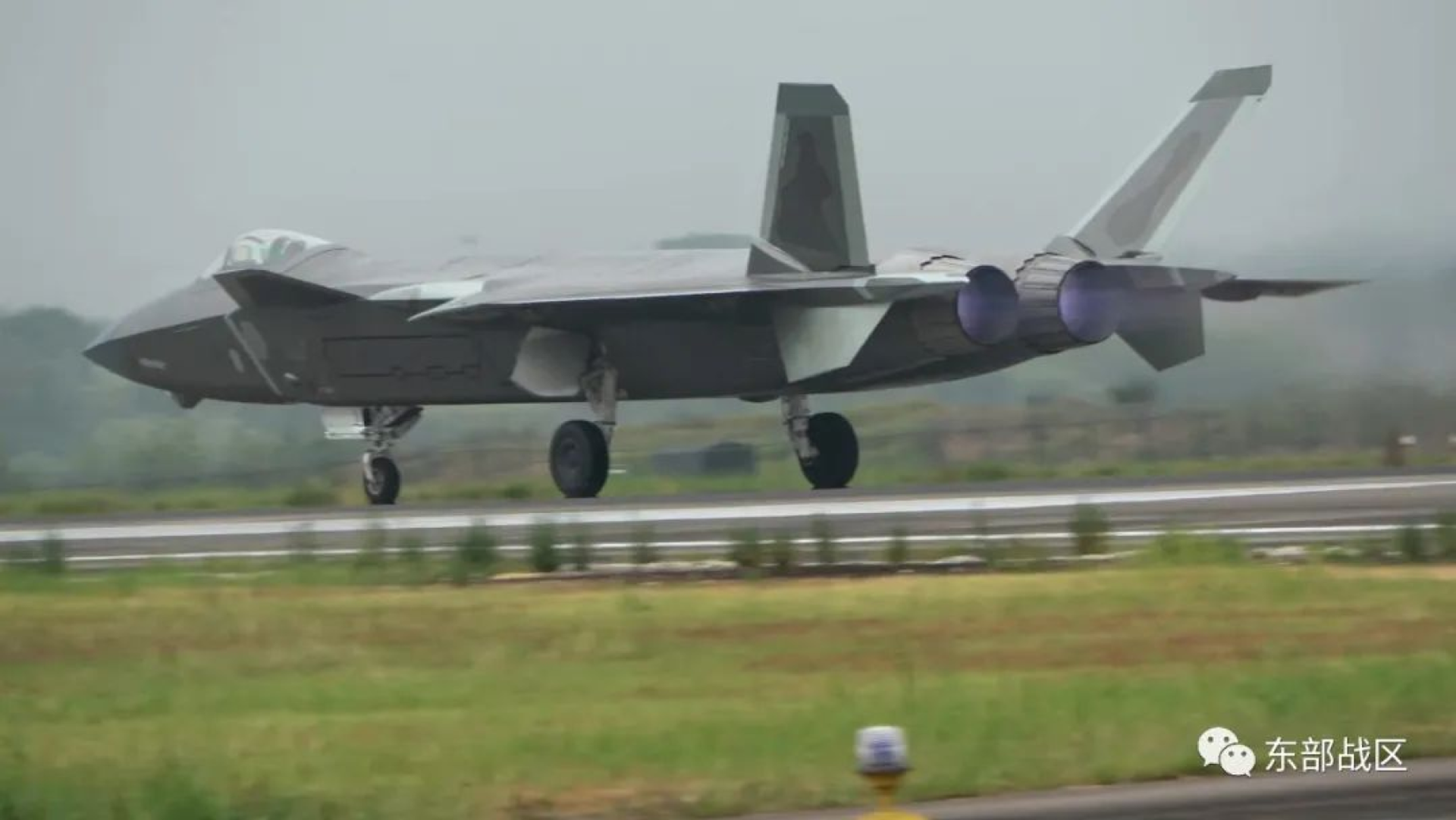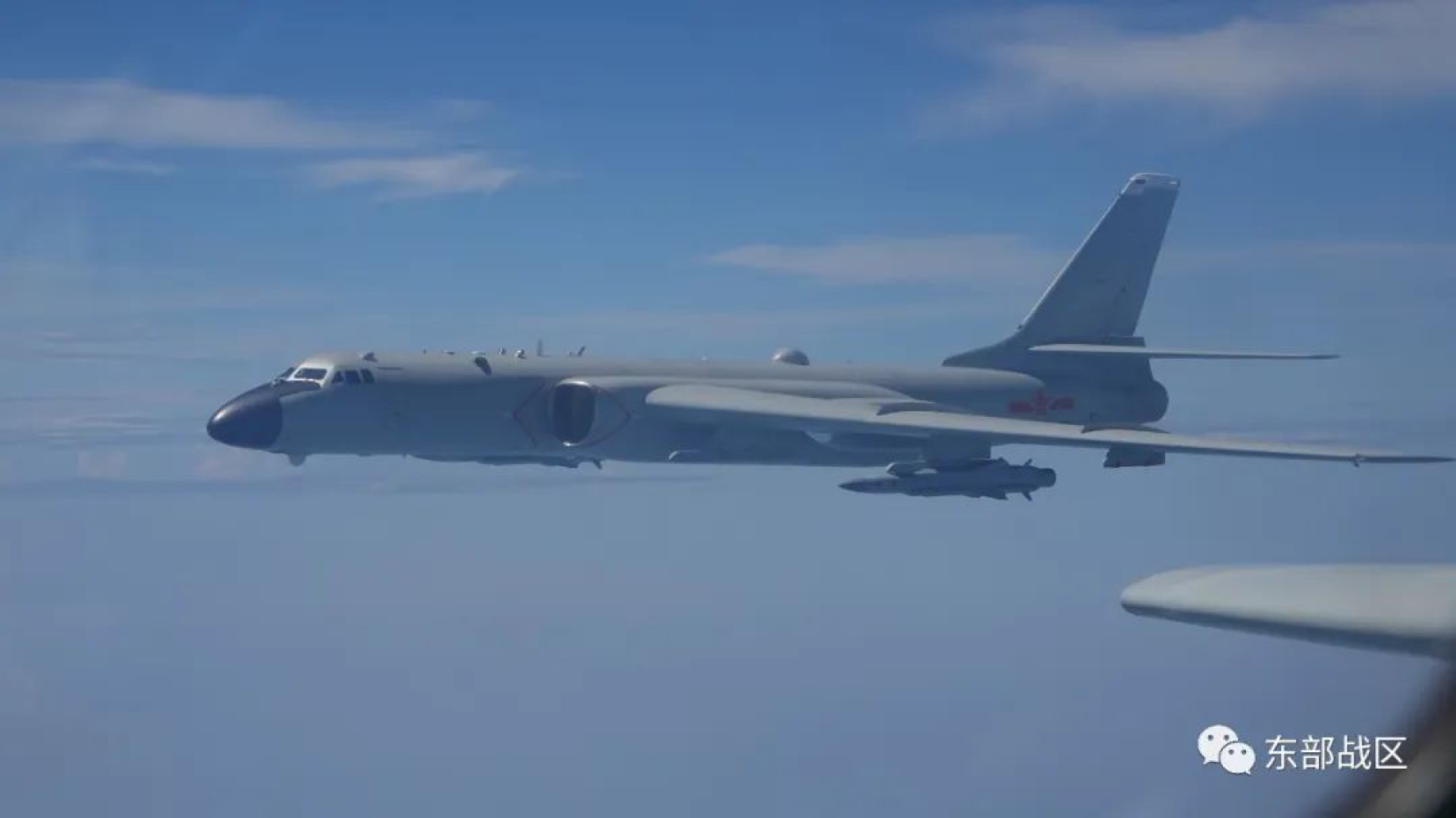Photos: China’s PLA Launches Massive ‘Reunification Operation’ Drills Just 12 Miles From Taiwan
18:13 GMT 03.08.2022 (Updated: 12:44 GMT 19.06.2023)
Subscribe
Following US House Speaker Nancy Pelosi’s (D-CA) arrival in Taiwan on Tuesday, China’s People’s Liberation Army (PLA) announced four days of military drills close to the island involving its most advanced weapons.
The PLA said the drills will run from August 4 through 7 in six different areas that encircle the island of Taiwan from all directions. A map of the exercise zones shows one in the Taiwan Strait, one in the South China Sea south of the port of Kaohsiung, two in the East China Sea near the Japanese-controlled Senkaku Islands, one in the Philippine Sea, and one in the Luzon Strait that separates Taiwan from the Philippines.

A sketch map shows the six regions where the People's Liberation Army will conduct important military exercises and training activities including live-fire drills surrounding the Taiwan island from August 4 to 7, 2022.
© Xinhua
The drills will be the closest the PLA has ever gotten to Taiwan - even closer than the March 1996 drills in which a Dongfeng-15 short-range ballistic missile (SRBM) splashed into the sea 25 miles from Kaohsiung, temporarily shutting down maritime traffic and sending the Taipei stock market into a tailspin. However, during the 1995-6 crisis of which those drills were a part, a DF-15 also reportedly flew directly over Taipei before landing in the Philippine Sea.
According to China’s Global Times, the PLA actually began the drills a day early, launching “joint blockade, sea assault and land and air combat trainings,” including J-20 stealth fighters and Dongfeng-17 hypersonic missiles, on Wednesday.
The report notes that all branches of the PLA joined in “realistic combat-oriented joint exercises” that ventured within the 12 nautical mile limit that the government in Taiwan claims as its territorial waters and that “the so-called median line will cease to exist” in the Taiwan Strait.
Other types of weapons reportedly being used in the drills are H-6K bombers, J-11 fighters, Type 052D guided-missile destroyers, Type 056A corvettes, and nuclear-capable Dongfeng-11 SRBM. In addition, Taiwan’s defense ministry reported detecting 27 Chinese aircraft in the extreme southwestern part of its self-declared air defense identification zone (ADIZ), including J-11, J-16 and Su-30 fighters, a KJ-500 airborne early warning and control aircraft, a Y-9 electronic warfare aircraft, and a Y-8 electronics intelligence-gathering plane.
Chinese military expert Song Zhongping told the Global Times on Wednesday that "In the event of a future military conflict, it is likely that the operational plans currently being rehearsed will be directly translated into combat operations."
"It means that our battle plan has been made clear to the US and the Taiwan authorities, and we are confident enough to inform them of the consequences of further provocation in this way," he said.
Song added that since the 1996 crisis, the PLA had “greatly improved” its ability and methods of carrying out strikes, outpacing both Taiwanese strength and American forces that could be deployed to defend the island.
‘A Historic Inevitability’
Pelosi departed the island on Wednesday after meeting with Taiwanese President Tsai Ing-wen and speaking before the island’s parliament, where she denounced China and said the US would “not abandon” Taiwan to what she called Chinese “authoritarianism.”
"Now more than ever, America's solidarity with Taiwan is crucial and that is the message we are bringing here today,” Pelosi said.
China has denounced Pelosi’s visit as provocative and has vowed to respond, saying it encourages “Taiwan independence forces” on the island who might seek to break away from China. Beijing sees Taiwan as a rebellious Chinese province, the last bastion of the old republican government defeated elsewhere in China in 1949, when the socialist People’s Republic of China was declared. Even though Washington switched its recognition from Taipei to Beijing in 1979, it has continued to informally support Taiwan’s ability to stay autonomous from Beijing.

A J-20 stealth fighter of China's People's Liberation Army Air Force (PLAAF) takes part in drills near Taiwan on August 3, 2022.
Chinese fears were vindicated by Taiwan’s official response on Wednesday, in which defense ministry spokesperson Capt. Jian-chang Yu referred to “our country’s territory and territorial waters” and said the drills “severely violates our country’s territorial sovereignty.”
Despite the drills, John Kirby, a spokesperson for the White House National Security Council, dismissed the notion that a larger conflict was at hand.
“We don’t believe we’re at the brink now, and there’s certainly no reason for anybody to be talking about being at the brink going forward,” Kirby told ABC News on Wednesday.
Chinese Foreign Minister Wang Yi said Wednesday that full reunification of Taiwan with the PRC is “a general trend and a historic inevitability.” Beijing wants Taiwan to accept a “one country, two systems” structure similar to that used for Hong Kong and Macau, but that if Taipei seeks to formally break away from China and declare itself an independent country, it will mean war.


